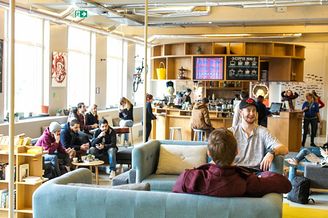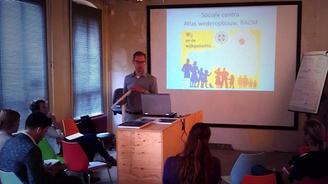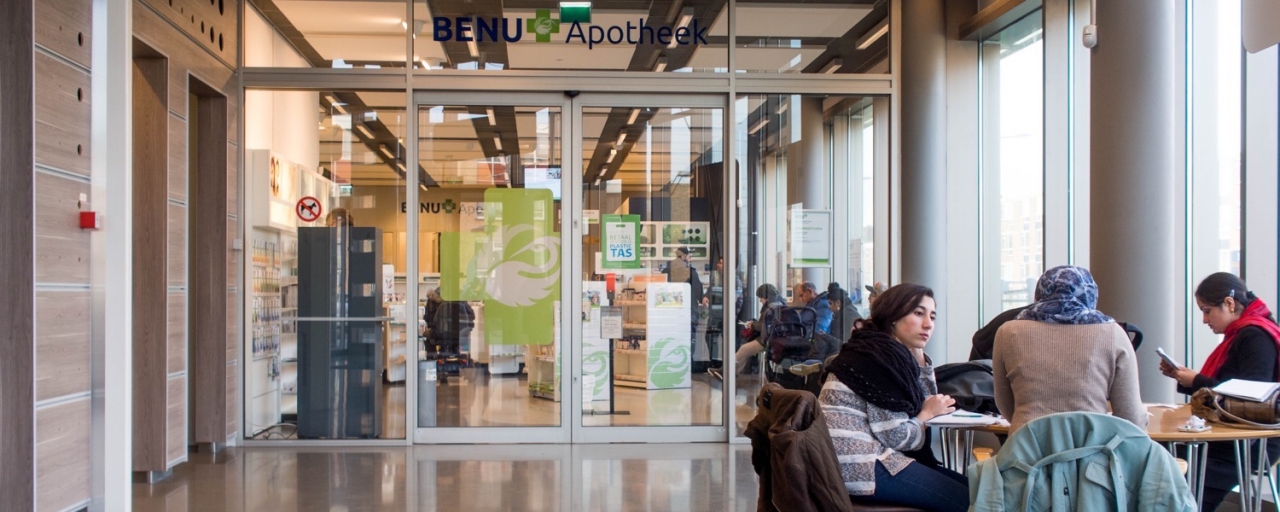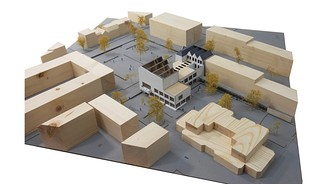Health and welfare organisations are looking for a new way to fulfil their social role. Some organisations are opening up their buildings to the general public to facilitate meetings between people based on the ideal of the ‘social marketplace’. Does that work? What are the characteristics of a good meeting place where people can make and maintain social support contacts? And can existing organisations take advantage of the opportunities?
New meeting places in the district
INTRODUCTION
The basic principle of the participation societyIn a participation society, the government bases its policy on the personal autonomy and self-reliance of its citizens. The Social Support Act (Wet maatschappelijke ondersteuning, WMO 2015) makes local authorities responsible for ensuring that people can continue living at home for as long as possible. Municipalities are responsible for supporting people who cannot be self-reliant on their own.is that it should enable people to lead self-sufficient lives: to be as independent as possible from the government, with the help from the people around them. This self-reliance is dependent on the size and the quality of these people’s social network, so one of the responsibilities of the municipalityThe WMO assigns the municipality a role in bringing about contact between people. In Rotterdam, the so-called “Huizen van de wijk” (neighbourhood houses) form an important component of the city’s welfare policy. Each district must have at least one publicly accessible space that can serve as a kind of living room for the district; a place where people can meet and come together to develop shared initiatives. The spaces must be accessible to as many groups as possible in the district: people with disabilities, older people – but also self-reliant residents who want to help improve their district.is to provide a social-physical infrastructure that helps residents to meet other people, for instance by creating areas in public spacesA public area, accessible to all, with a public function. Three kinds of values are usually associated with these spaces: a political-democratic value (exchange of opinions); a social value (exchange of information and interaction); and a symbolic value (representing shared values). This topic includes a focus on the social value of the public space.where residents can meet each other and thereby strengthen their social network.
SOCIALE MARKTPLAATS
The idea of a social marketplace,In his book about public real estate, researcher Marc van Leent (2012) writes about spaces that are simultaneously meeting places and social marketplaces: a place where social and cultural capital is exchanged. Van Leent argues that these places can become ‘vital hubs’ in our networked society. One example of such a vital hub in Rotterdam is the Leeszaal Rotterdam West(‘Rotterdam West Reading Room’). Because this is a space that serves a mix of functions, and because people from a variety of different networks meet here, all kinds of new activities and initiatives are created here (Van der Zwaard & Specht (2015), De uitvinding van de leeszaal).a hub where people can meet and exchange resources, is a powerful one. This idea is a great fit for the ideal of the participation society: a society in which people are self-sufficient and prefer to ask each other for help rather than go to the government. The idea is for this kind of ‘marketplace’ to be a space where social and cultural capitalIt was sociologist Pierre Bourdieu who first introduced the concepts of social and cultural capital. He made a distinction between three main forms of capital: economic capital, (money and real estate), cultural capital (knowledge, skills, education) and social capital (relationships, networks). People use all three forms of capital to improve their position in society. Sociologist Robert Putnam identifies two kinds of social capital: bonding capital and bridging capital. Bonding capital is a form of social capital that is more inward-looking, focused on a person’s own social group. An example of this could be someone’s immediate family and friends, when there’s a high degree of reciprocity. Bridging capital represents connectedness based on several different characteristics; this form of capital deals in diversity, in relationships with people from different social groups. The importance of social capital was demonstrated in the nineteenth century by sociologist Emile Durkheim, who clearly showed that belonging to a group and experiencing social support can offer protection against unemployment and even suicide. Conversely, we now have access to a wealth of research showing that a lack of social contact can lead to health problems.is exchanged, where people can benefit from each other’s knowledge and networks. For example, you could get ‘free’ advice from a friendly lawyer or learn specific behaviours, such as polite conversation, that will help you achieve your goals. But a social exchange doesn’t have to be seriously impactful: it can be enough simply to make regular eye contact. That way, you get to know your neighbours by sight, which contributes to a sense of security and feeling ‘at home’ (Blokland, 2008).Blokland, T. (2008). Oog voor elkaar: Veiligheidsbeleving en sociale controle in de grote stad [Looking out for each other: Feelings of security and social control in the big city]. Amsterdam, the Netherlands: Amsterdam University Press
The idea is that people can benefit from each other's knowledge and acquaintances
CORE QUESTIONS ON THIS TOPIC
The more different groups come together, the greater the opportunity to make meaningful contacts. At least, that’s the theory. Of course, simply opening up a space where a lot of different people can meet each other is not enough to bring about positive interaction and support. So what are the key features of a good meeting place where everyone can make and maintain social contacts? And do those social contacts really offer people support? Could existing organisations, many of which are facing their own transformation issues, take advantage of the opportunities? These are the core questions at the heart of all the research on this topic.
PUBLIC SPACES
Public, freely accessible spaces are of course useful for making these interactions possible – that’s what they are intended to do. They are open to everyone. What features of public spaces increase the chance of making good contacts? There are many different theories that attempt to answer this question. For example, researchers Varna and TiesdellGeorge Varna & Steven Tiesdell (2010). Assessing the Publicness of Public Space: The Star Model of Publicness, Journal of Urban Design, 15:4, 575-598onderscheiden vijf kenmerken waaar publieke ruimten in meerdere of mindere mate aankunnen voldoen:
(1) Publicly or privately owned (ownership): this covers a range of degrees and many hybrid forms, such as an airport or an open-air terrace in a public square.
(2) Social accessibility (control): the level of social accessibility can vary. There are some public spaces where everyone is welcome, and where there are no controls. Other spaces may be partially accessible, or access may be controlled (for example, an open area in a shopping centre with security cameras, or places that employ a doorkeeper).
(3) Aesthetics (civility): a good public space is well tended and has a positive feel, and diverse social groups are welcome there. There is less of a sense of accessibility in places with excessive checks, or on the other hand in areas that have been neglected.
(4) Physical configuration: is it easy for the general public to use the space? This point rests on accessibility in a physical sense. Does the space have good links to the central infrastructure? Are there any obstacles? Is the space also visually accessible?
(5) Programme (animation): are there sufficient publicly accessible facilities, such as public toilets, good lighting, art, a cafe, or ‘something fun to do’.
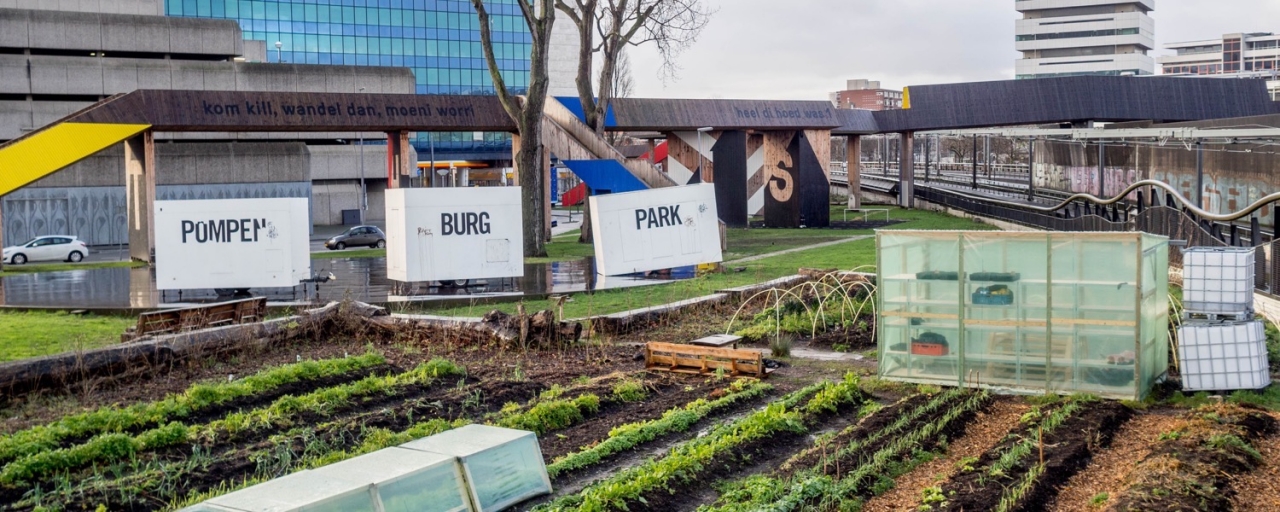
FROM RAISING PEOPLE UP TO A MEETING BETWEEN EQUALS. WHAT WAS IT LIKE IN THE PAST?
A lot of public buildings and community centres were set up in the 20th century as places where people could come together. The concept of the community centre emerged at the end of the 19th century, when a lot of people were moving from the countryside to the city. Community centres were used for social purposes such as community education, emancipation and tackling anti-social behaviour.
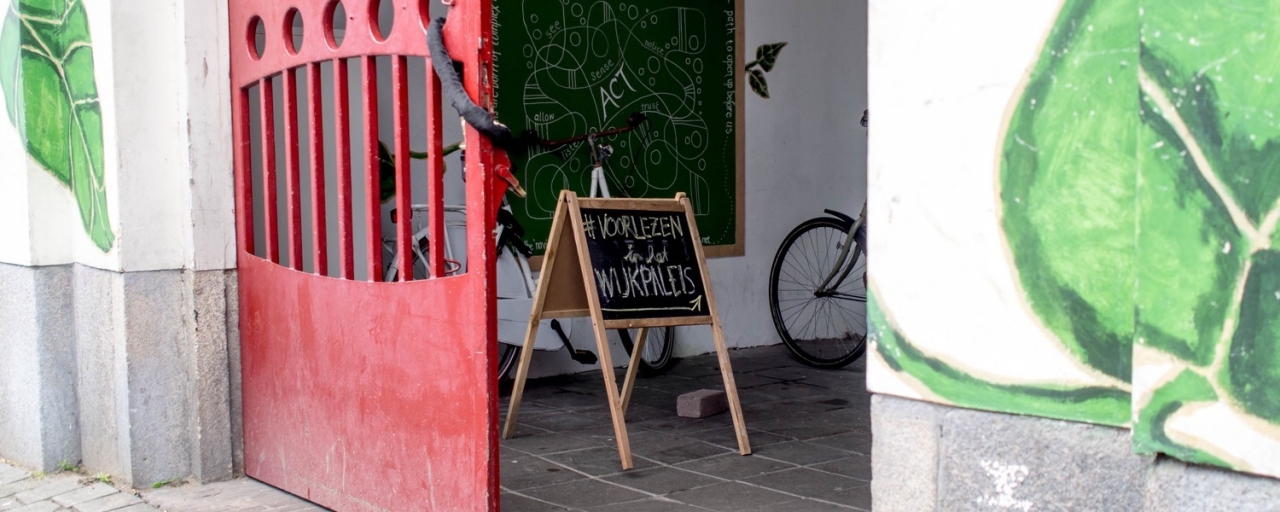
Unfortunately, many of these community centres are now outdated. They often have a repetitive programme, and the earlier ideal of raising people up has caused them to focus too much on people at the bottom of society. Can they find a way to connect with new social developments? The modern community demands a broader structure, a place where all the different social groups can come to exchange their experiences and resources. (A community house).
NEW COMBINATIONS WITH HEALTH AND WELL-BEING
Many social facilities are under pressure as a result of budget cuts, demographic developments and technological change. Care homes are being closed; schools are being merged; libraries and community centres are disappearing. Some locations are trying to transform themselves into multifunctional buildings, into places that are open to the neighbourhood and that offer support to local residents, for example by creating public spaces on the ground floor.
The Veldacademie’s research focuses on the following topics:
COMMUNITY SCHOOLS
Community schools offer not just education, but also a meeting place for parents. They can also fulfil an even broader community function, such as hosting music lessons for all the children in the neighbourhood, computer courses for older people or sports facilities for local residents. How can schools serve as an anchor in the neighbourhood, and how can educational and community functions be combined in a building?

